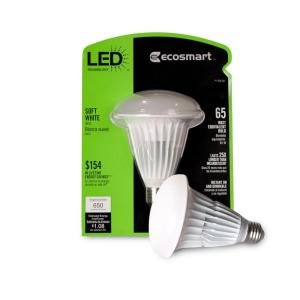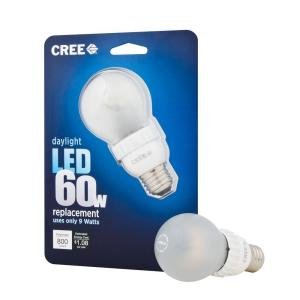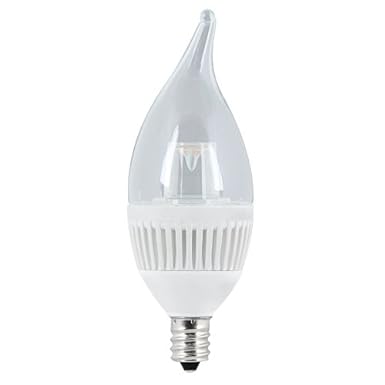Telly
Thinks s/he gets paid by the post
- Joined
- Feb 22, 2003
- Messages
- 2,395
Let's start a thread where those who have purchased LED bulbs can tell us of their GOOD ones.
Let's keep it to bigger bulbs used for area illumination, not night lights and the like.
The more info you can give, the better.
Home Depot Ecosmart 9 Watt (65W) BR30 Soft White (2700K) LED Flood Light Bulb
650 Lumen, Life 22.8 years based on 3 hrs./day
SKU184-441, UPC 887437000694, $15.88 and still the same price today in HD stores
I bought and installed this in June, has a lot of use and on/offs on it already. It is a BR30 flood (face just less than 4" across) which I put into a recessed-can fixture. At the time I bought it, they were just starting to stock it. They also had a daylight 5400K model for a higher (IIRC) cost but I wanted the warm white.
Very happy with it. I'm not one to get excited about light bulbs, but I have run many different bulbs through this particular fixture over the years, and this one puts out a nice light and acts just like an incandescent BR30, without all the heat generated (it is in a very small room, door often closed ). By looking at it, the color of the light it puts out, even flipping the switch on and off, no way to tell that it ISN'T an incandescent.
). By looking at it, the color of the light it puts out, even flipping the switch on and off, no way to tell that it ISN'T an incandescent.
Let's keep it to bigger bulbs used for area illumination, not night lights and the like.
The more info you can give, the better.
Home Depot Ecosmart 9 Watt (65W) BR30 Soft White (2700K) LED Flood Light Bulb
650 Lumen, Life 22.8 years based on 3 hrs./day
SKU184-441, UPC 887437000694, $15.88 and still the same price today in HD stores
I bought and installed this in June, has a lot of use and on/offs on it already. It is a BR30 flood (face just less than 4" across) which I put into a recessed-can fixture. At the time I bought it, they were just starting to stock it. They also had a daylight 5400K model for a higher (IIRC) cost but I wanted the warm white.
Very happy with it. I'm not one to get excited about light bulbs, but I have run many different bulbs through this particular fixture over the years, and this one puts out a nice light and acts just like an incandescent BR30, without all the heat generated (it is in a very small room, door often closed




